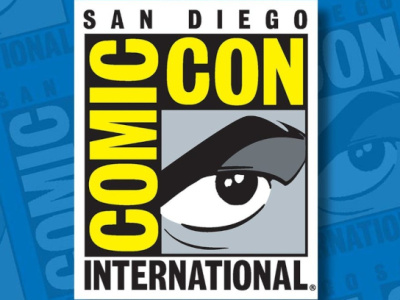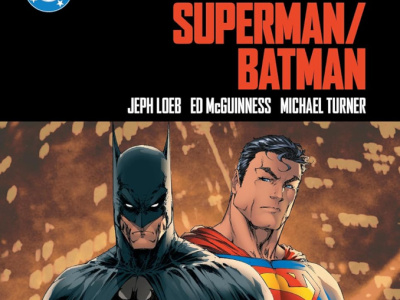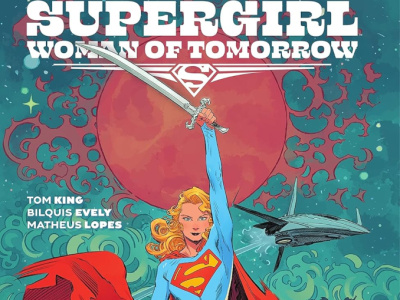
We recently caught up with Image Publisher Eric Stephenson to talk about the comics market and Image’s place in it. In Part 2 of this three part interview, Stephenson talks about the digital and graphic novel portions of the market, and reveals that digital is now a “double digit percentage” of Image’s sales. In Part 3, Stephenson talked about what makes Image unique, and argues that "over the last 20 years, you can’t point to anything new that has been created by Marvel and DC that’s had any lasting impact." And in Part 1, Stephenson talked about his view of the comics market, including the revelation that Saga #1’s four printings now total around 70,000 copies, and discusses what numbers are revealed and what they tell us.
Can you characterize digital as a percentage of your sales?
It varies title per title. The overall percentage is small. There are books that do very well and there are books that, for whatever reason, don’t do as well digitally.
Single digit percentages?
Oh no. There are titles that do single digits, but overall I would say digital is a double digit percentage of sales.
What’s the trend line been for graphic novels over the past year?
Lots of people want to buy The Walking Dead books. I don’t think anyone would disagree that that has been a phenomenon. We’ve done a pretty good job of managing our backlist on that. It’s been surprising the further along we get into it. The property is almost 10 years old at this point, and we still routinely have to go back to press on the first volume and the compendium that collects the first 48 issues of the series. We just went back to press on it at the end of last year, and we’re already back to press not even six months later. It’s clearly our most successful property.
Did you feel the impact of the loss of Borders on your sales?
Nope. Borders was never very kind to us in terms of ordering. When Kurt Hassler was the buyer, he and I had a very interesting relationship where I would meet with him at BEA [Book Expo America] and he would always tell me he wasn’t interested in what we did, and I would give him the highlights of what we had coming up. He’d say, "That’s all great. I’m sure someone will enjoy that."
I think it was widely acknowledged by most people that Kurt’s big thing was manga. That was what he backed in the stores. There were things they took a modest interest in, but they never ordered super heavy on our stuff and even after he left and was replaced that didn’t change too much. The more successful The Walking Dead became, they became a bit more supportive of that, but we just had an odd relationship. I didn’t want to push them to order things that they didn’t want to sell, for whatever reason, and they didn’t order in huge numbers. That wound up being very beneficial to us in the long run.
Is it right that Image sold more trades than Marvel in 2011?
We were the number two provider of trade paperbacks and graphic novels to the direct market in 2011.
We were the number two provider of trade paperbacks and graphic novels to the direct market in 2011.
So that’s for the comic store channel.
Right. If you look at it, The Walking Dead was a chunk of the top titles 10, and the first Marvel came in at #52, or something like that. That was Kick-Ass by Mark Millar.
You said your digital sales are growing along with print sales and you’re seeing it as a different customer, which is good news. Where do you think digital sales are going to be in a couple years?
A couple years from now it’s going to be very similar to how it is now, honestly, unless something really drastic happens in the direct market that results in a lot of stores closing. The direct market does a very good job of providing a service to comic book fans that they can’t get anywhere else. If you want to go talk to people about comics, be part of the whole experience that comic stores provide, you can’t get that just by downloading something from an app onto your phone or iPad. The argument could be made that you could go to online forums to discuss comics, but at the end of the day it’s just not the same experience. I think that’s one of the reasons why comic books stores, as opposed to a place like Borders which wasn’t very specialized, have a different experience than going into a place where everybody’s there because they love what they do.
I liken it to when Tower and Virgin went out of business, but there are these guys who are selling vinyl records who are still around and are thriving in some cases because they have a rapport with their customer and with what they’re selling and it just creates a better experience. From that perspective, I think as long as there are people who want to buy print comic books from comic book stores that’s going to continue to happen. Are there going to be more people [whose] point of entry is digital? Yeah, I think that’s going to happen and that’s going to change the landscape over a period of time, but not over the next two years. I think then you’re looking at what’s going to happen over the next 10 to 15 years.
What do you expect that change to be?
I don’t think it’s going to be a surprise to anyone that there’s going to be a generation of young people who start off and their whole reading experience is through an iPad, a Kindle or a Nook or whatever, that’s how they’re going to be coming at this stuff. That’s going to be the norm for them. We’re not there yet, but anyone who is in their single digit age group now are going to be growing up more accustomed to digital than to print, then we’re looking at the next 10 to 15 years.







